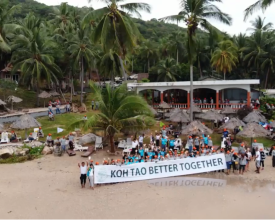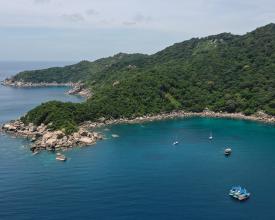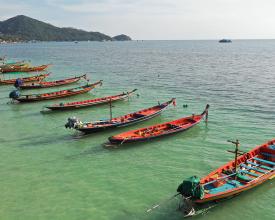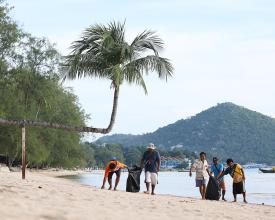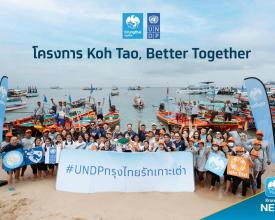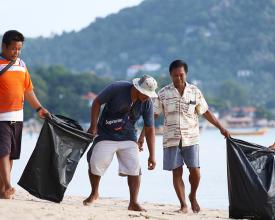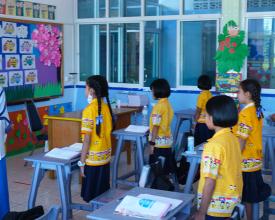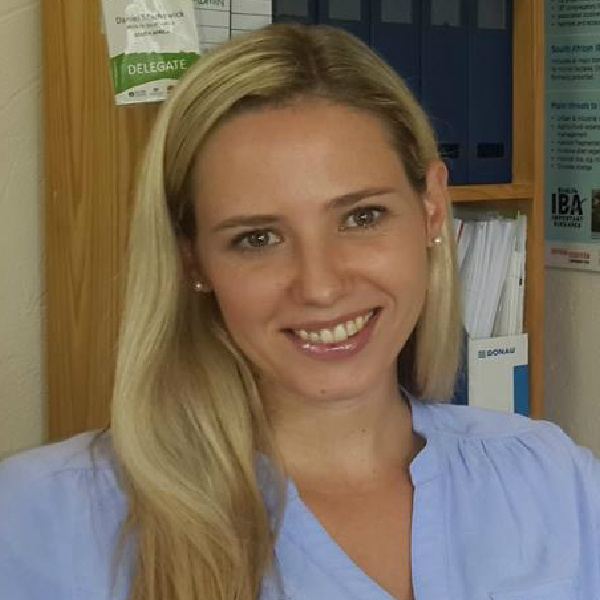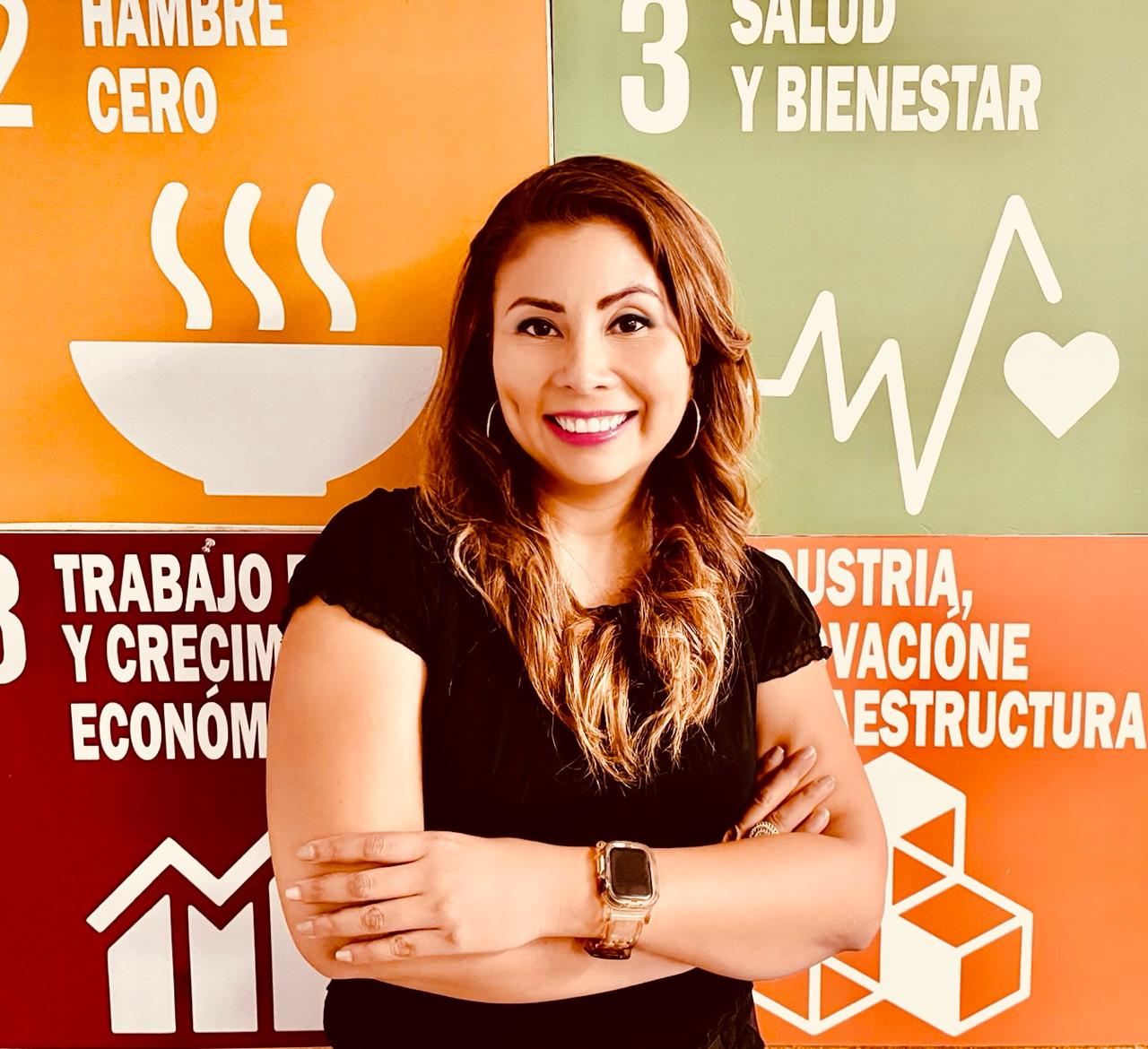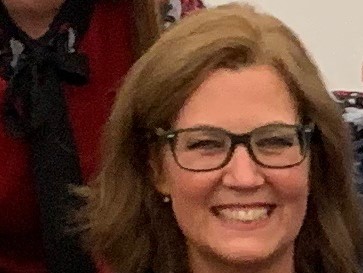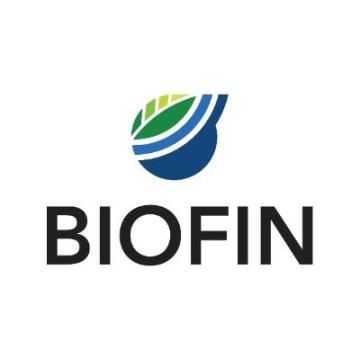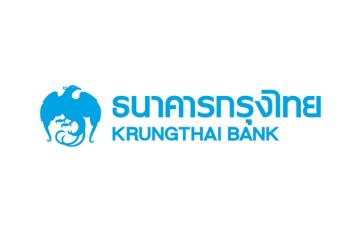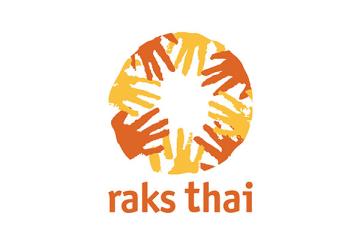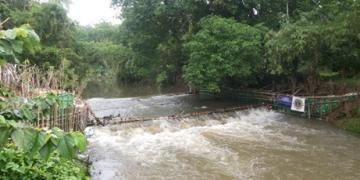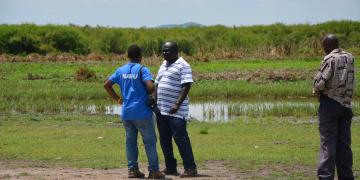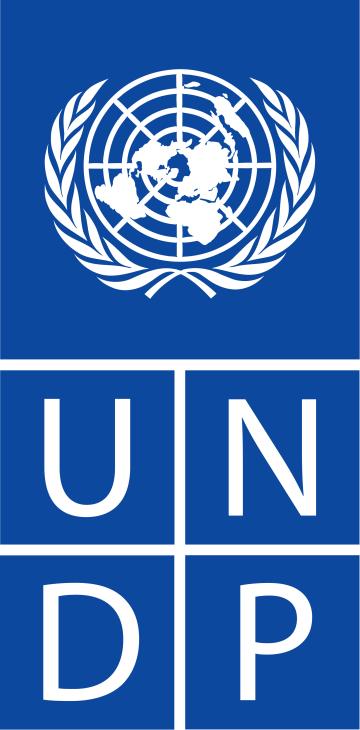
Koh Tao Better Together: crowdfunding to support livelihoods and restore biodiversity in times of crisis
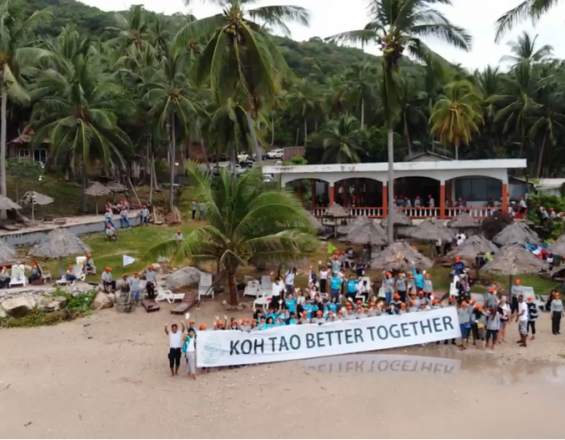
Koh Tao is an island in Thailand with rich biodiversity and considered one of the best diving sites in the world. Tourism is the main source of income for locals, with up to 700,000 visitors per year before COVID-19.
With the pandemic, taxi and small fishing boat drivers lost their income. UNDP BIOFIN partnered with the Krungthai Bank, Raks Thai Foundation, UNDP Thailand, and the Koh Tao Sub-district Municipality to launch "Koh Tao Better Together": a crowdfunding campaign to support the livelihoods of those affected by the interruption in tourism while contributing to biodiversity conservation. The campaign raised USD 92,847, surpassing the target of USD 64,800 within 90 days.
Funds were used to create a cash-for-work program. 200 boat drivers were hired for three months to clean beaches, collect marine debris, and mobilize locals. These efforts resulted in the collection of 40 tons of marine debris and engaged the local community in long-term conservation.
Contexto
Défis à relever
Koh Tao island is heavily dependent on tourism and used to receive 500,000 to 700,000 visitors annually before COVID-19. Challenges in waste management and the island's limited capacity, in combination with intensive tourism, have put pressure on the local environment, evident in beach litter and marine debris.
On the other hand, tourism is the main source of income for Koh Tao’s residents and the sole source for many households. With the pandemic, the Royal Thai government introduced a lockdown that led to the complete interruption of tourism. This measure affected the livelihoods of boat drivers, tour operators, and other related workers, many of whom lacked alternative income opportunities which was aggravated by limited financial and digital literacy, especially affecting women.
Lastly, local communities lacked strong mobilization for joint biodiversity conservation efforts.
Ubicación
Procesar
Summary of the process
First, the socio-economic impact assessment was essential for designing a cash-for-work program that is evidence-based, targeting those most in need, and able to effectively address their vulnerabilities. Second, the use of innovative and accessible digital platforms helps disseminate the crowdfunding campaign beyond the region of implementation, enabling nationwide contributions and thus quickly raising the necessary funds to implement the cash-for-work program. Finally, the establishment of local community organizations and skills training created a platform for collaboration and strengthens local capacities and ownership. This, in turn, encourages a long-term behavioral change towards biodiversity restoration and conservation.
Building Blocks
Data-driven and evidence-based design for effective crowdfunding strategies
UNDP Thailand conducted a socio-economic impact assessment of COVID-19 on Koh Tao's tourism sector. Using pre-pandemic data and information from locals, the study concluded that small tourist boat drivers are amongst the most affected and most vulnerable segment of the population due to the complete dependence on tourism. The study estimated the minimum living cost of USD 500 (THB 15,000) for individual households in Koh Tao and found that 90% of them received almost no income since the beginning of the pandemic. The study served as the foundation for the campaign, enabling the estimation of a baseline, making sure that the solution addresses the most vulnerable groups and provides an income that can, at least, alleviate sustenance needs. The campaign was also designed with the support from UNDP's Crowdfunding Academy, with expertise in this area.
Enabling factors
Enabling conditions include the availability of socioeconomic data prior to the event (in this case, the COVID-19 pandemic) or the ability to collect data from relevant stakeholders before designing the crowdfunding campaign. Another enabling condition is having the technical capacity or necessary support to translate existing data and studies into the design of a project/program.
Lesson learned
The importance of designing programs and projects based on data and well-conducted studies, ensuring that the project effectively meets the needs of participants. Beyond supporting the design of the crowdfunding campaign, the impact assessment of COVID-19 on Koh Tao revealed how, on the one hand, local livelihoods became vulnerable without tourism and, on the other hand, the pause in visitor activity allowed nature to recover. Therefore, the crowdfunding campaign — and the COVID-19 impact assessment — were the entry point for rethinking a more sustainable future for tourism on the island.
Technology and innovation to create digital platforms that are accessible and tailored to local needs
Krungthai Bank (KTB), a key partner in the "Koh Tao Better Together" crowdfunding campaign, developed an easy-to-use electronic donation platform integrated with the Thai tax system. The bank's innovation lab offered to create the e-donation platform. Through a QR code, Thai citizens were able to make donations in a quick, transparent, and verifiable way. The platform allows Thai donors to automatically send their donation information to the Revenue Department for tax deduction. UNDP also designed another e-donation platform for international donors.
KTB acted as the initial donor of the campaign, contributing 30% of the fundraising target. Furthermore, the bank committed to covering the remaining donations if the target was not met, which was unnecessary thanks to the success of the campaign.
Additionally, KTB provided trainings on digital financial services to boat drivers.
Enabling factors
The key enabling factor is the establishment of effective public-private partnerships to leverage the expertise of each stakeholder. By combining BIOFIN's financial expertise, KTB's innovation, Raks Thai Foundation's experience in engaging local communities, and the government's role in overseeing financial services, it was possible to develop and disseminate an appropriate e-donation platform and run the campaign.
Another relevant condition is effective communication strategies to increase public awareness of, and access to, the e-donation platform.
Lesson learned
It is imperative to promote partnerships and multisector engagement to address global and local challenges that are multidisciplinary by nature, from financial constraints amid a global health crisis to biodiversity and ecosystem degradation.
Moreover, it is crucial to develop solutions that reflect advancements in innovation and digitalization. When well-designed, digital tools have the potential to reach a large number of individuals (i.e., surpassing the fundraising target) and simplify processes (i.e., connecting the e-donation platform with the tax system). Equal importance must be given to the training of locals on these digital tools, enabling just and equitable access.
Cash-for-work program to link financial assistance with positive environmental outcomes
The crowdfunding campaign raised resources to provide cash transfers to taxi boat and small fishing boat drivers, who were identified as one of the most vulnerable groups due to the COVID-19 pandemic (for more information, please refer to building block 1). To achieve this, a cash-for-work program was established, in which temporary cash transfers are conditional on the provision of labor for the corresponding period. The boat drivers were hired for three months to clean beaches, collect marine debris, recycle the waste collected, and mobilize the local community for biodiversity conservation.
In this way, the campaign not only contributed to the livelihoods of boat drivers during the pandemic, but also increased their awareness of, and engagement with, biodiversity loss caused by unsustainable practices. These engagements strengthened a sense of ownership among locals towards the campaign and their own island, serving as an additional motivation for conservation and restoration, fostering behavior change after the cash-for-work program ended.
Enabling factors
Willingness of locals to engage in the work, along with effective communication campaigns to increase mobilization of those participating in the cash-for-work program and for biodiversity conservation.
Lesson learned
Cash-for-work programs have the potential to provide incentives for behavior change with long-term impacts by combining much-needed financial support with awareness raising and skill building efforts. These programs also uphold the agency of participants, who engage in meaningful work in exchange for income.
Community-centered approach focused on ownership and skills development for current and future generations
In addition to the cash-for-work program, local community organizations were established that organize joint activities and serve as a platform for collaboration between the Koh Tao Municipality and locals. Five community organizations were established: Koh Tao Fisherfolk group; Sairee Taxi Boat Group; Mae Haad Taxi Boat Group; Koh Tao Women Group; and Koh Tao Youth Group.
The communities received training on the implementation of biodiversity finance solutions, financial and digital literacy, and other skills such as fish processing and T-shirt tie-dying. Locals started using community organizations to coordinate clean-ups and committed to continue working on marine debris removal and beach cleaning.
As part of the cash-for-work program, boat drivers were also trained in waste segregation. After the program they submitted a proposal for the Koh Tao Sub-district Municipality to establish waste separation bins in their tourist boats.
Moreover, KTB promoted activities for the students at Baan Koh Tao School focused on financial literacy, inclusion, and knowledge management. A small-scale studio for Koh Tao Kids Channel (TaoNoi Channel) was set up to create knowledge content for students. KTB also financially supported fisherfolks in acquiring fish aggregating devices.
Enabling factors
Willingness of locals to participate, pre-existing identification in groups that serve as the foundation for the formation of the community organizations (i.e., fishers, boat drivers, etc.), human and financial resources for the formation of the organizations, and willingness of the local government to engage with the organizations.
Lesson learned
Strengthening the sense of ownership and addressing the specific needs and skills gap of each subgroup within the target population has been critical in establishing community organizations. By getting organized into formal associations, local communities gain strategic entry point to engage with the local government and other organizations.. The submission of a proposal for the Koh Tao Sub-district Municipality to fund the establishment of bins for waste separation is a clear example of that.
In addition, it has facilitated collaboration between different groups. For example, it helped find a solution among diving and fisher folk groups by zoning marine areas in partnership with the local government. The diving group also engaged in the marine debris collection, playing an important role in it.
Impacts
The campaign helped alleviate the socioeconomic pressure of the pandemic on local livelihoods while promoting biodiversity conservation. Koh Tao Better Together raised USD 92,847 (THB 2.75 million, exceeding its initial goal of USD 64,800 (THB 1.94 million) by over 40%. 200 boat drivers received USD 100 (THB 3,000) per month for three months and collected 40 tons of marine debris.
Moreover, the establishment of community organizations created a platform for long-term engagement among locals, including with the local government, and facilitated organization of conservation activities. In 2022, the local government introduced tourism fees in Koh Tao, generating revenues for the sustainable funding of biodiversity conservation.
This initiative was selected by UNDP Crowdfunding Academy in June 2023 as the best example for COVID-19 recovery and, through its partnership with KTB, received the Global Corporate Sustainability Awards for best practices in 2021.
Beneficiaries
Main beneficiaries are Koh Tao locals, especially those reliant on tourism. Others include the sub-district government, as the solution eased local issues, plus tourists and future generations, who will enjoy a Koh Tao committed to preserving biodiversity.
Global Biodiversity Framework (GBF)
Sustainable Development Goals
Story
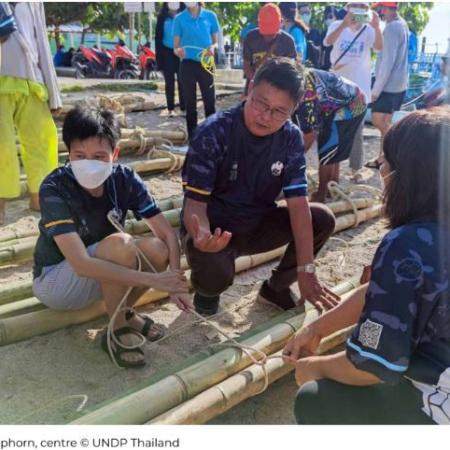
Watcharin Fasiriphorn, mayor of Koh Tao Sub-district Municipality, shared how he witnessed the island change over the years, the impact of COVID-19, and the transformations that followed this period.
Fasiriphorn first came to Koh Tao in 1987 to work temporarily at the community health post. Over time, he settled permanently on the island — first as a doctor and later working in the tourism sector. At the time, Koh Tao was home to rural communities and horses were the main mode of transport, contrasting with the motorbikes used by tourists today.
The mayor explained that over the years, tourism in Koh Tao grew significantly and became the mains source of income for locals. However, its negative impacts on biodiversity also became evident, including coral breakage, marine debris, and the expansion of houses into forest areas.
With the COVID-19 pandemic, the interruption in tourism threatened the livelihoods of Koh Tao's residents. A small tourist boat driver explained that he once earned THB 2,000 per day, an income that was reduced to nearly zero. As several drivers are self-employed and own their boats, they still faced maintenance costs and had no other sources of support.
A small-scale fisherfolk shared a similar experience: "I used to sell fish to tourists at THB100/kg. But right now, even THB50/kg, I could hardly sell them to the market because there are no tourists".
On the other hand, mayor Fasiriphorn explained that the pandemic brought a shift in the relationship with local biodiversity, as nature was able to recover due to the reduced influx of visitors.
By making the cash transfers conditional on work toward biodiversity restoration, locals mobilized to protect nature, started coordinating clean-ups, received equipment, and built long-term commitment for this goal.
"Before COVID-19 came in 2020, we used our resources superfluously, causing a lot of damage to our natural resources and environment", Fasiriphorn shared. For the mayor, the solution demonstrated "how communities, tourists, businesses, and local government units can unite and effect real change".
To read Fasiriphorn's full report, please click here.
You can also check the story of locals whose livelihoods were affected by the pandemic, including those mentioned above, by watching this video.

